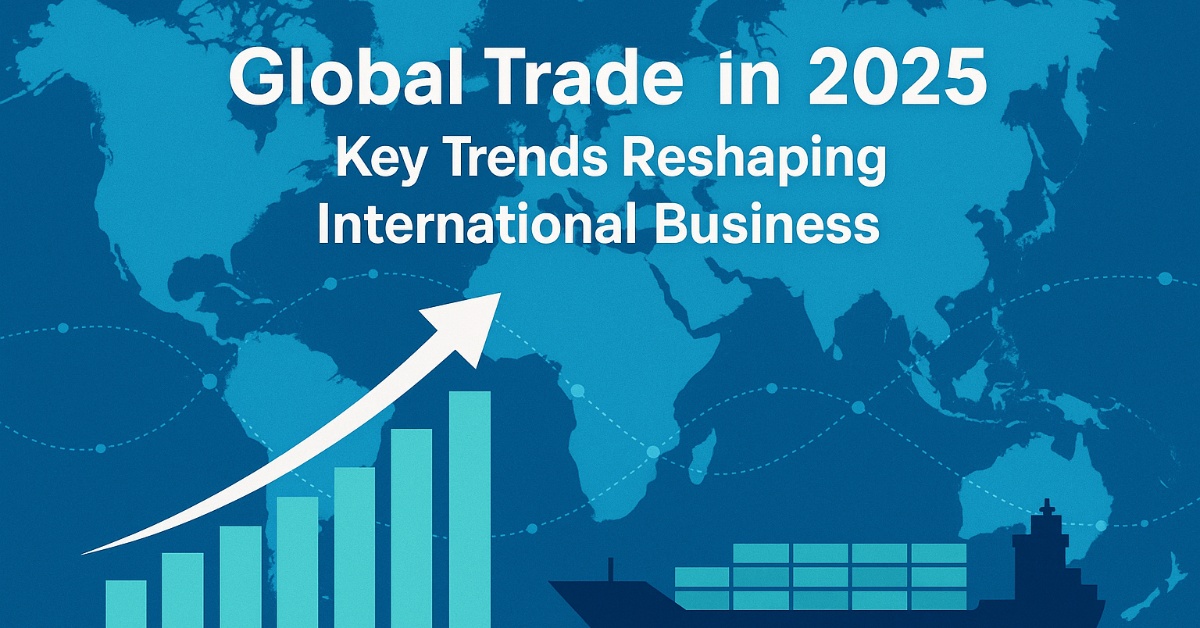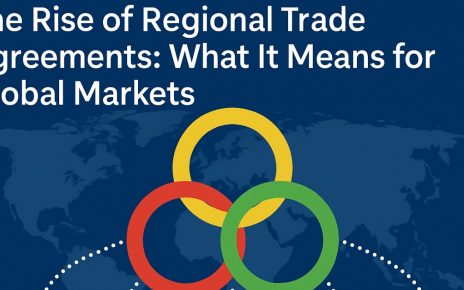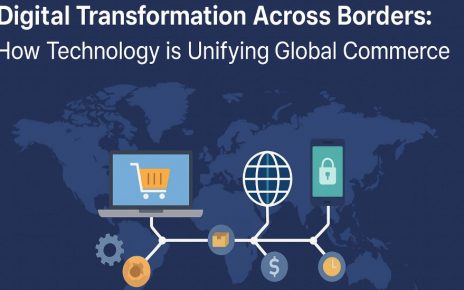As we navigate through 2025, global trade is undergoing significant transformation. The interplay of technology, geopolitics, environmental concerns, and shifting consumer behavior is redefining how countries and corporations engage across borders. For businesses aiming to remain competitive in international markets, understanding these key trends is more critical than ever.
1. The Rise of Regionalism Over Globalization
While globalization is far from dead, there is a visible shift toward regionalization in trade. Nations are increasingly seeking self-reliance and prioritizing closer, more stable trade relationships with neighboring countries. Agreements such as the Regional Comprehensive Economic Partnership (RCEP) and the African Continental Free Trade Area (AfCFTA) are examples of this new regional focus.
For businesses, this trend means adapting strategies to capitalize on regional agreements and ensuring compliance with localized trade regulations. Regional hubs are becoming more influential, with logistics and warehousing strategies being reoriented accordingly.
2. Geopolitical Tensions and Trade Realignment
U.S.-China trade tensions, the ongoing war in Ukraine, and rising political instability in certain regions have disrupted traditional trade flows. As a result, companies are diversifying their supply chains to mitigate geopolitical risks.
“Friendshoring” — the practice of relocating supply chains to politically aligned countries — is gaining momentum. For instance, many U.S. firms are shifting manufacturing from China to countries like Vietnam, India, or Mexico. This shift is leading to a more fragmented but resilient global trade environment.
3. The Acceleration of Digital Trade
Digital trade, encompassing e-commerce, data transfers, digital services, and intellectual property, is booming. Businesses are increasingly leveraging digital platforms to sell goods and services globally, reducing dependence on traditional physical infrastructure.
In 2025, digital infrastructure such as blockchain, cloud computing, and artificial intelligence (AI) is playing a crucial role in trade facilitation. Blockchain, for example, is enhancing transparency and efficiency in cross-border transactions, reducing fraud and paperwork.
Moreover, regulatory bodies are catching up. New digital trade agreements are being forged to protect data privacy and intellectual property, ensuring smoother digital commerce across borders.
4. Sustainability and ESG Standards in Trade
Environmental, Social, and Governance (ESG) standards are no longer optional—they’re now integral to global trade. Consumers, investors, and governments are pushing for sustainable practices, and international businesses are responding.
Countries are implementing carbon border adjustment mechanisms (CBAMs), which tax imports based on their carbon footprint. The European Union’s CBAM is a prime example, compelling exporters to meet green standards if they want access to the EU market.
To stay compliant and competitive, global businesses are investing in green technologies, decarbonizing supply chains, and adopting ethical labor practices.
5. Supply Chain Reconfiguration and Resilience
The COVID-19 pandemic exposed the vulnerabilities of global supply chains. In 2025, the focus is on resilience over cost efficiency. Businesses are adopting “China+1” or “multi-shoring” strategies, where reliance on a single country is avoided.
There’s also a growing trend toward nearshoring—bringing production closer to the home market. Technology plays a vital role here, with automation and AI enabling cost-effective local manufacturing.
Trade logistics are also being transformed by real-time tracking systems and smart contracts, enhancing visibility and reducing delays in cross-border shipments.
6. Shifting Consumer Preferences and Localization
Global consumers are becoming more conscious, informed, and diverse in their preferences. In response, international businesses are embracing localization strategies—customizing products, marketing, and customer experiences to regional tastes.
From language-specific websites to regionally relevant advertising campaigns, businesses are recognizing the importance of cultural sensitivity. Moreover, supply chains are being adapted to cater to local production and faster delivery expectations.
This trend is particularly noticeable in industries like fashion, electronics, and food, where consumer loyalty is deeply tied to cultural relevance and sustainability.
7. Trade Finance Innovation
Financing trade has historically been a cumbersome process, often dominated by traditional banks and requiring piles of paperwork. In 2025, fintech innovations are reshaping trade finance, making it faster, more accessible, and less dependent on intermediaries.
Digital platforms now offer real-time invoice financing, blockchain-based letters of credit, and AI-driven credit risk assessments. This democratizes access to global trade for small and medium-sized enterprises (SMEs), which previously faced financial barriers in international markets.
8. The Role of AI and Automation
Artificial intelligence and automation are deeply integrated into global trade operations. From predictive analytics in inventory management to automated customs declarations and AI-powered customer support, businesses are optimizing every stage of international trade.
AI is also enabling smarter decision-making in market entry strategies by analyzing complex datasets related to regulations, demand, and competitive landscapes.
However, with great power comes great responsibility. International businesses must balance automation with ethical considerations, ensuring that job displacement is managed and data privacy is upheld.
9. New Trade Agreements and Policy Frameworks
2025 is witnessing a wave of new-generation trade agreements that go beyond tariffs. These agreements include clauses on digital rights, environmental commitments, and labor standards. Businesses must stay updated on such frameworks to avoid penalties and access preferential treatment.
For example, the Indo-Pacific Economic Framework (IPEF) emphasizes digital trade and clean energy, while the EU-Mercosur Agreement includes stringent environmental clauses. Ignoring these elements can lead to exclusion from lucrative markets.
10. Cross-Border Talent and Workforce Shifts
Global trade is not just about goods—it’s about people. Remote work, digital nomad visas, and the global hunt for tech talent are shifting how companies build international teams.
Talent acquisition is now borderless. However, it requires careful navigation of immigration laws, tax implications, and cultural management. Businesses investing in cross-border teams are benefiting from innovation, flexibility, and market insight, especially in fast-evolving industries.
Conclusion
The landscape of global trade in 2025 is dynamic, multilayered, and rapidly evolving. International businesses must be proactive, flexible, and deeply informed to navigate this new era. From digital transformation to ESG compliance and geopolitical strategy, the future of trade belongs to those who can adapt with agility and foresight.
For companies willing to embrace these changes, the rewards are substantial—access to new markets, stronger supply chains, and long-term sustainability in an interconnected world.



